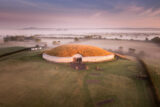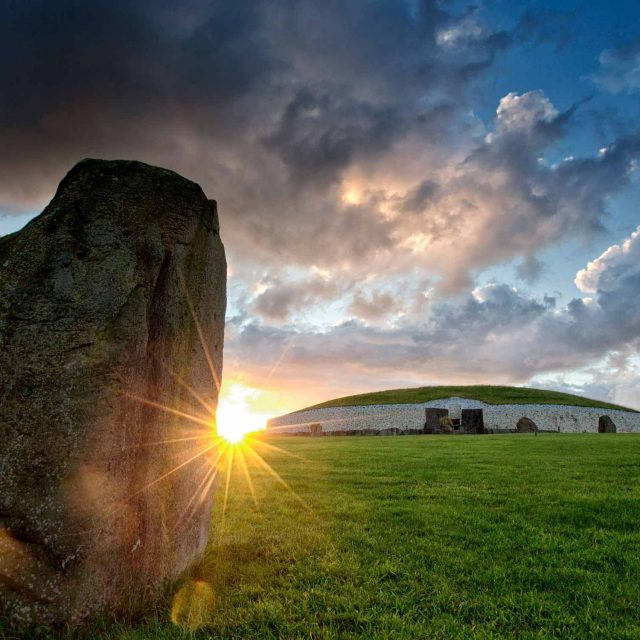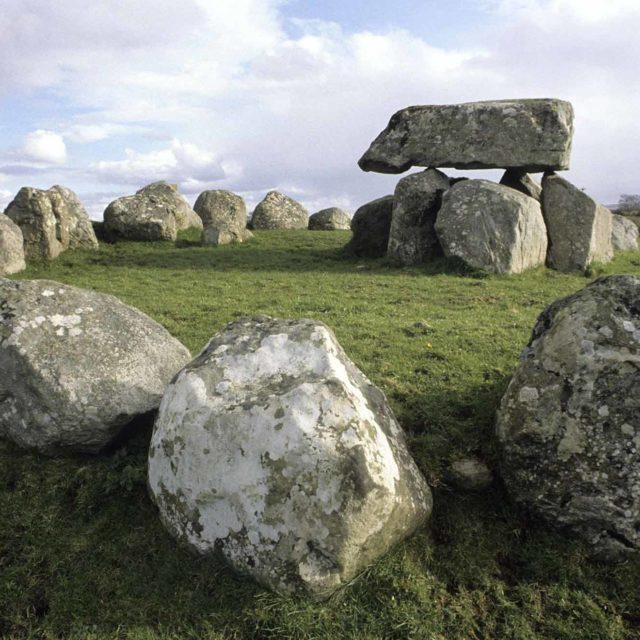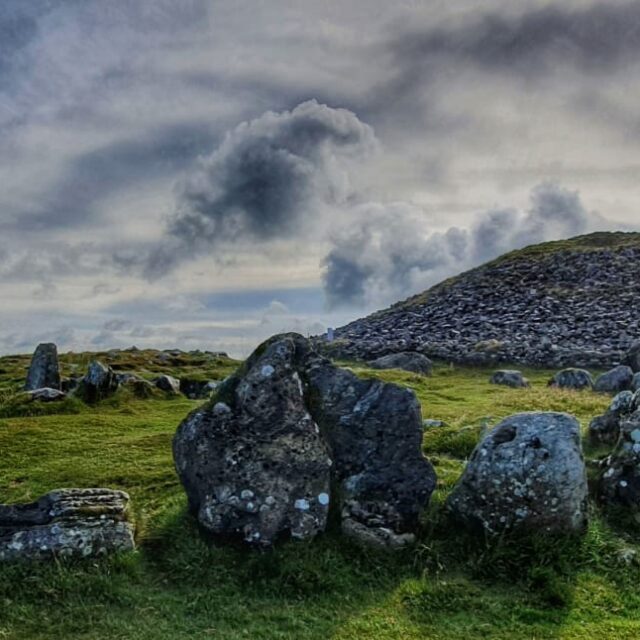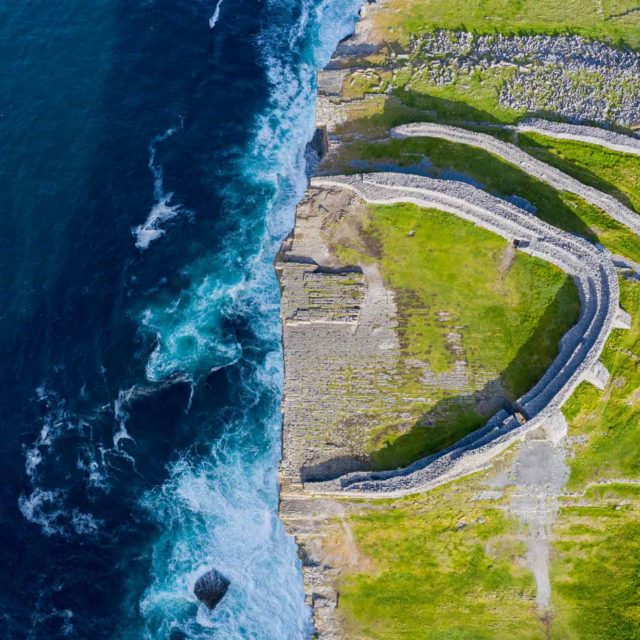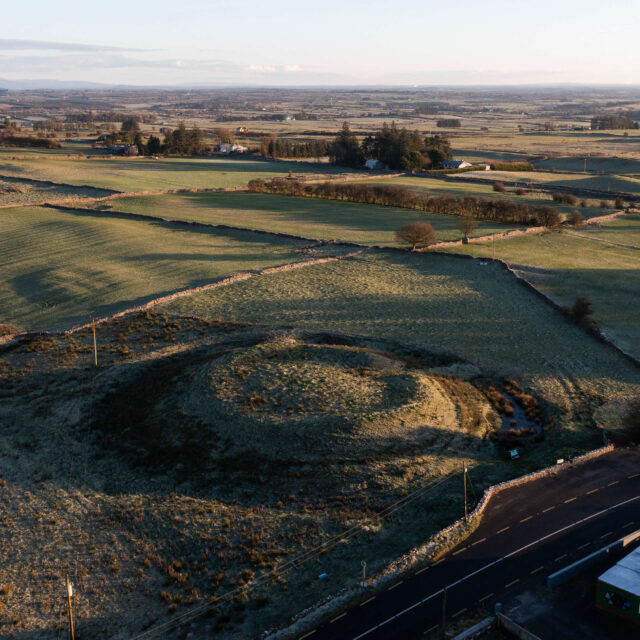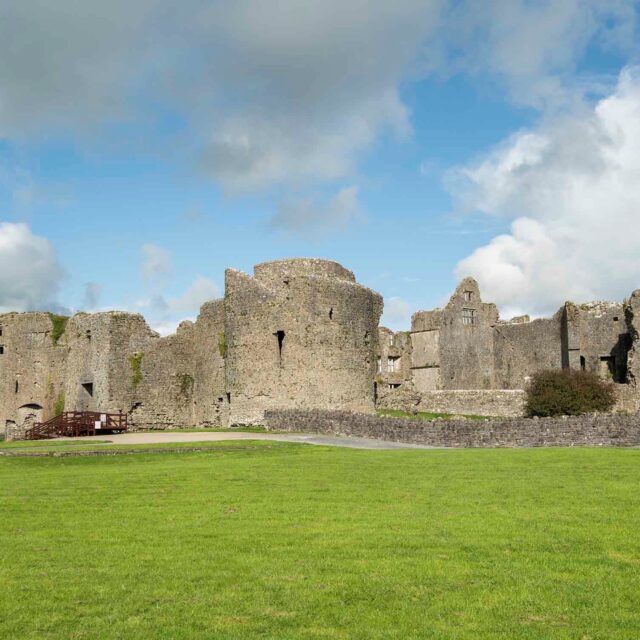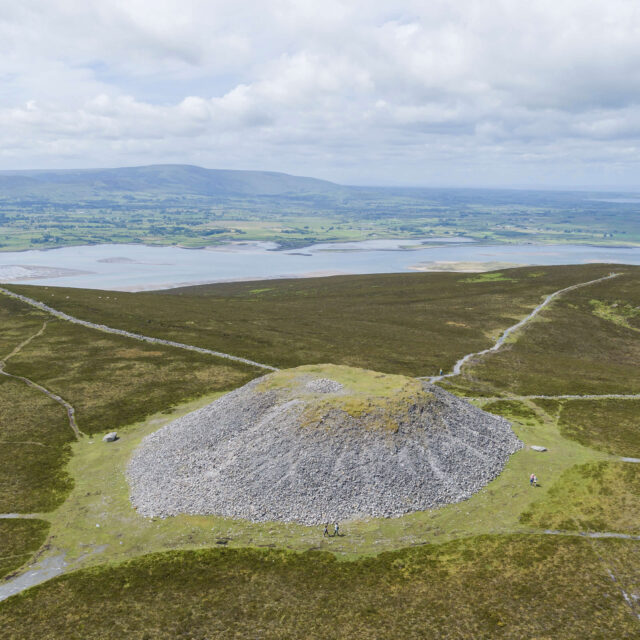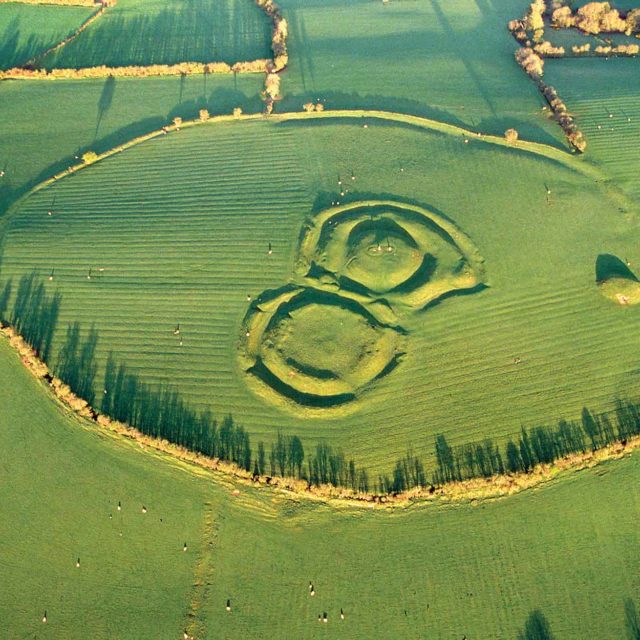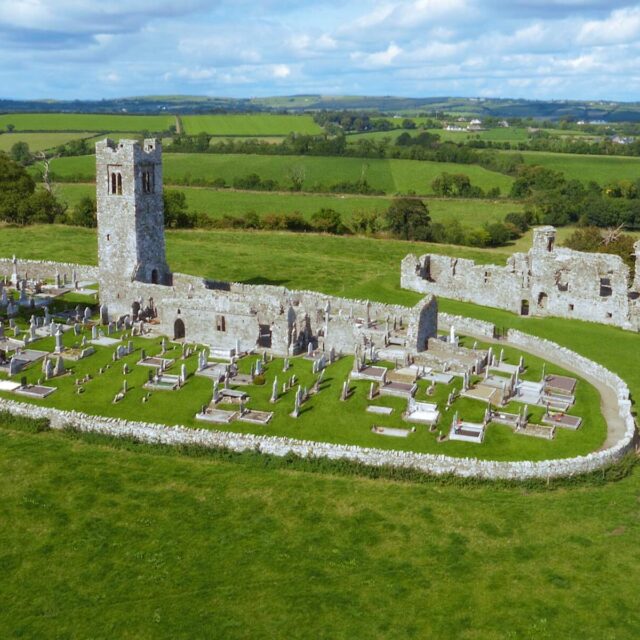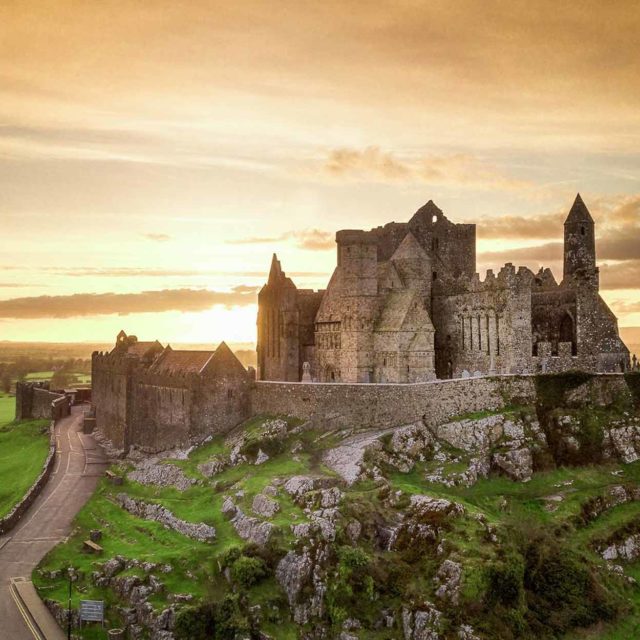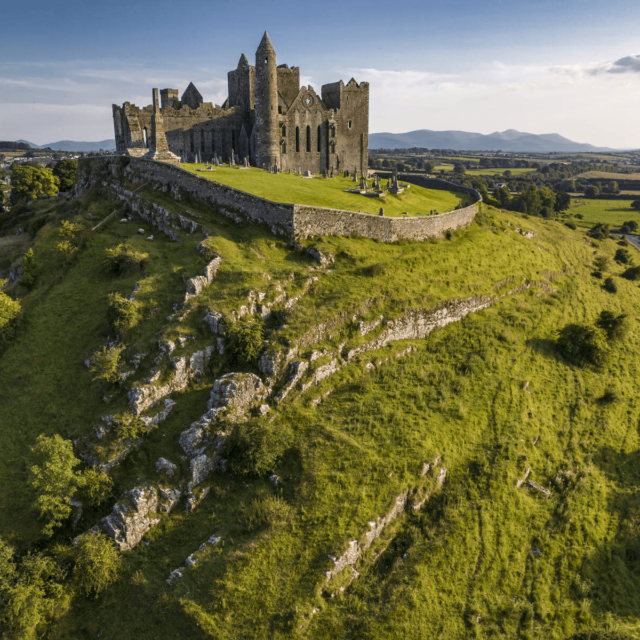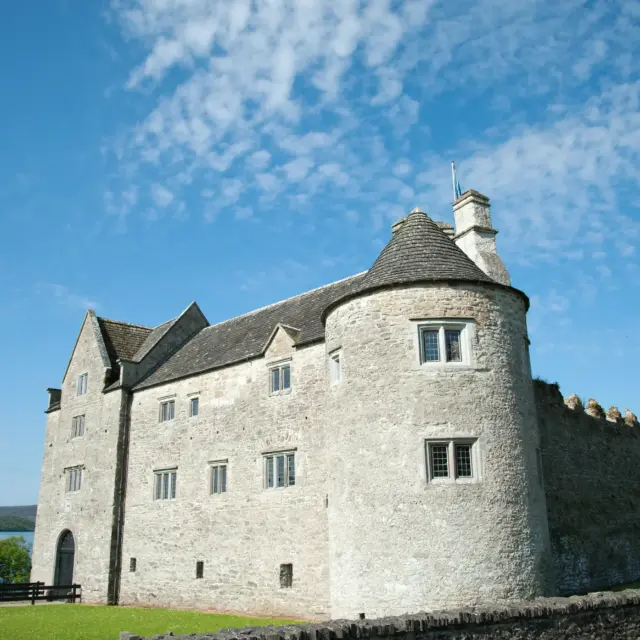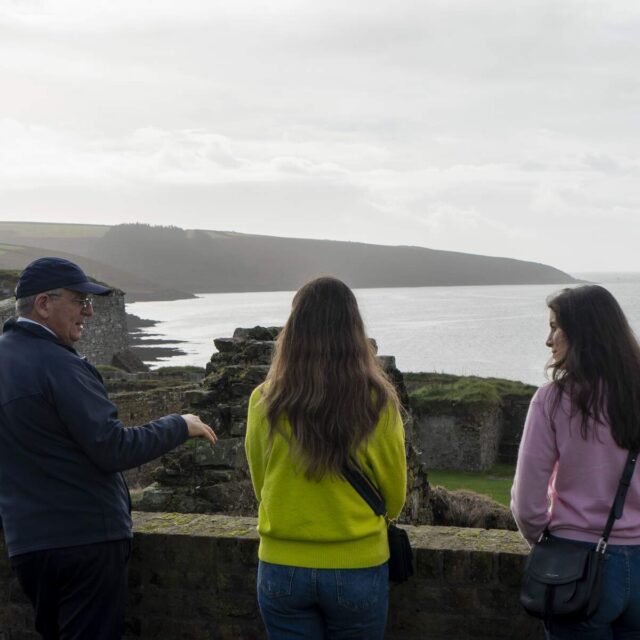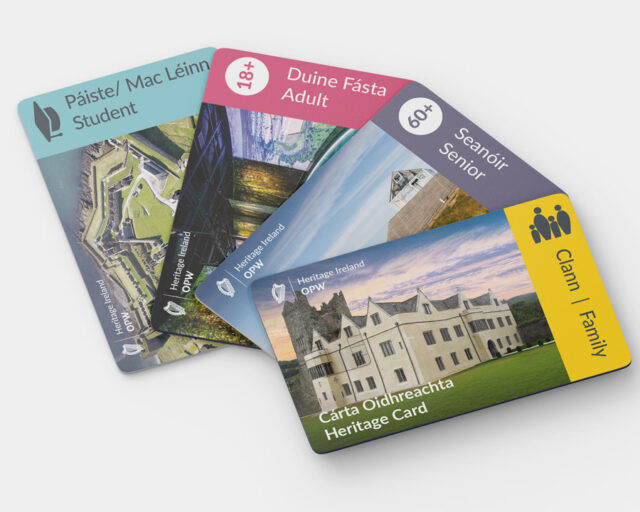Day 1 — Oengus Óg
Brú na Bóinne Visitor Centre: Newgrange, Knowth and Dowth
Newgrange
Brú na Bóinne was said to have been the permanent residence of Oengus Óg, the Celtic god of love and youth.
It is at Brú that the story ‘The Dream of Oengus’ culminates. After continuously dreaming of a woman named Caer, Oengus goes in search of her for a year. Upon finding her in swan form, he transforms into one himself in order to be with her, and the two fly back to his home at Brú na Bóinne together.
This is also where Oengus brings his foster son, Diarmuid, after he was killed by Fionn Mac Cumhaill, taking his body home to rest at Brú.
